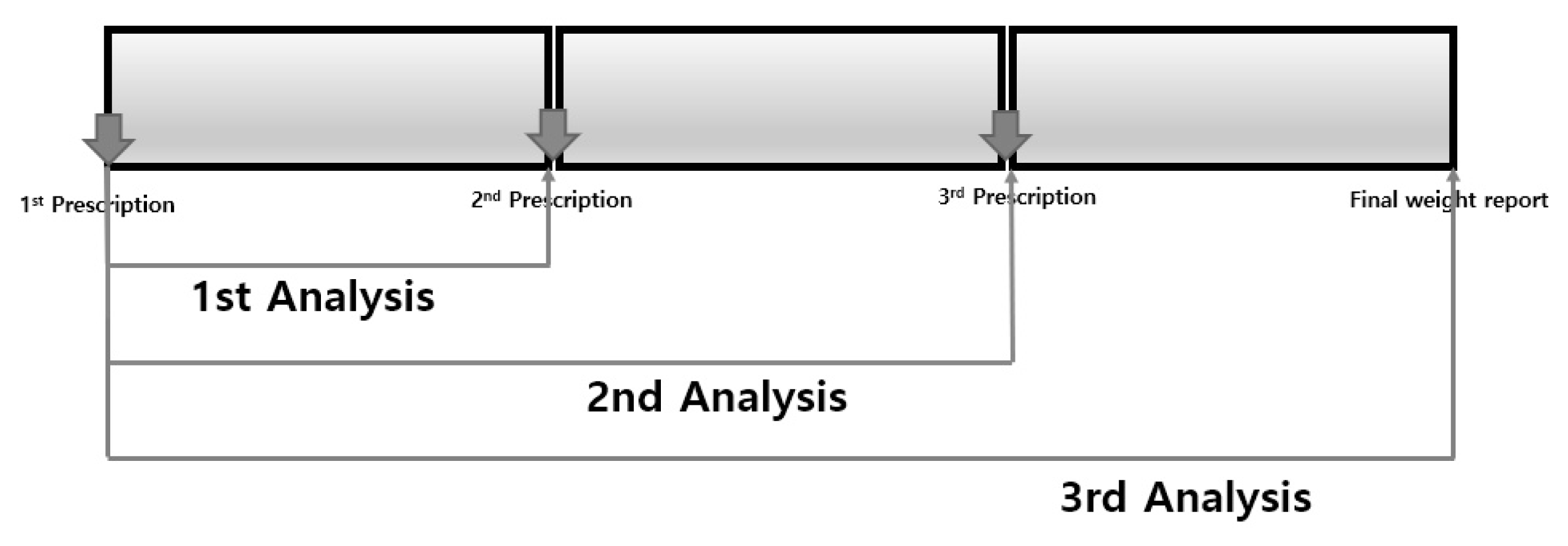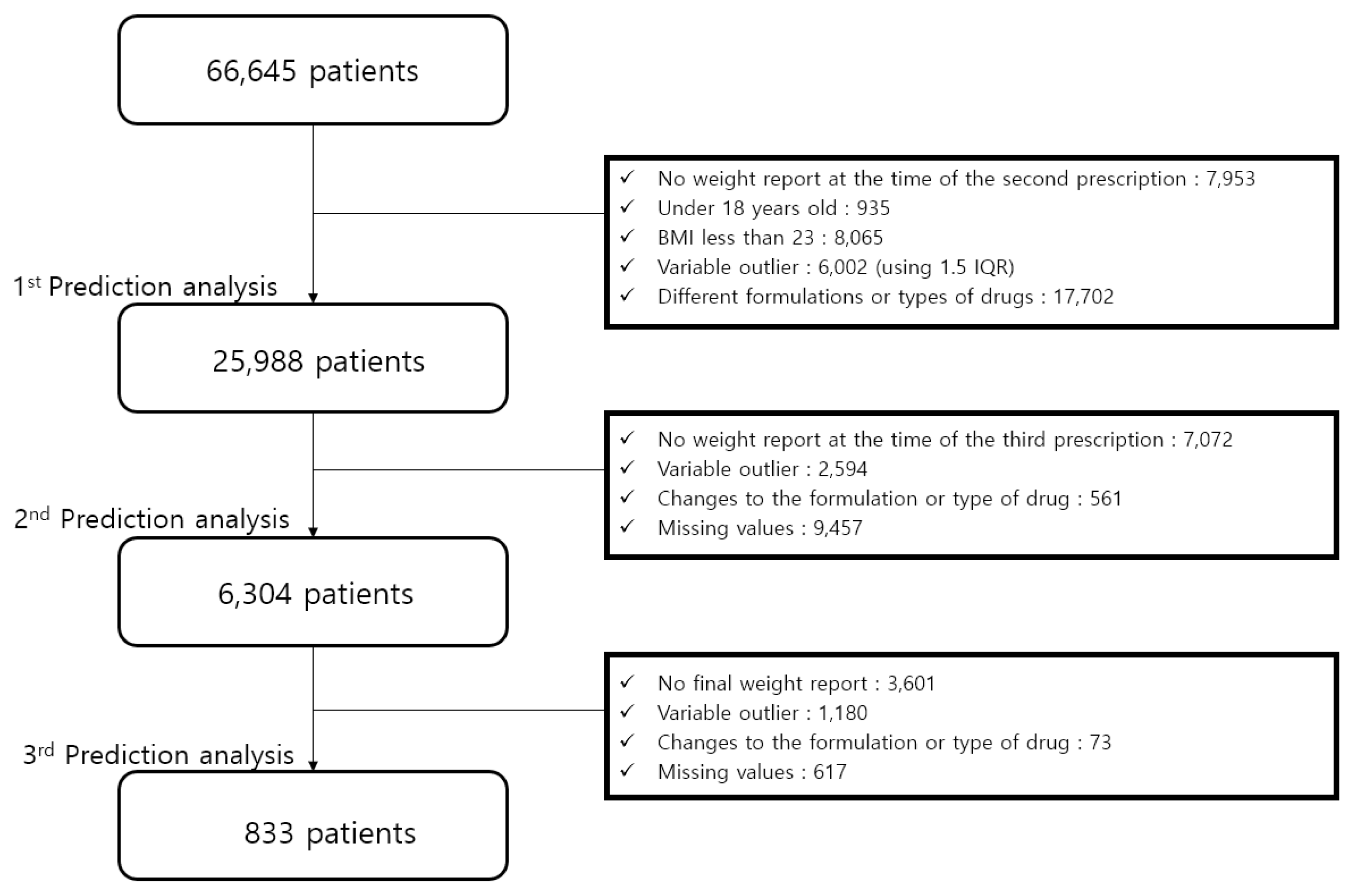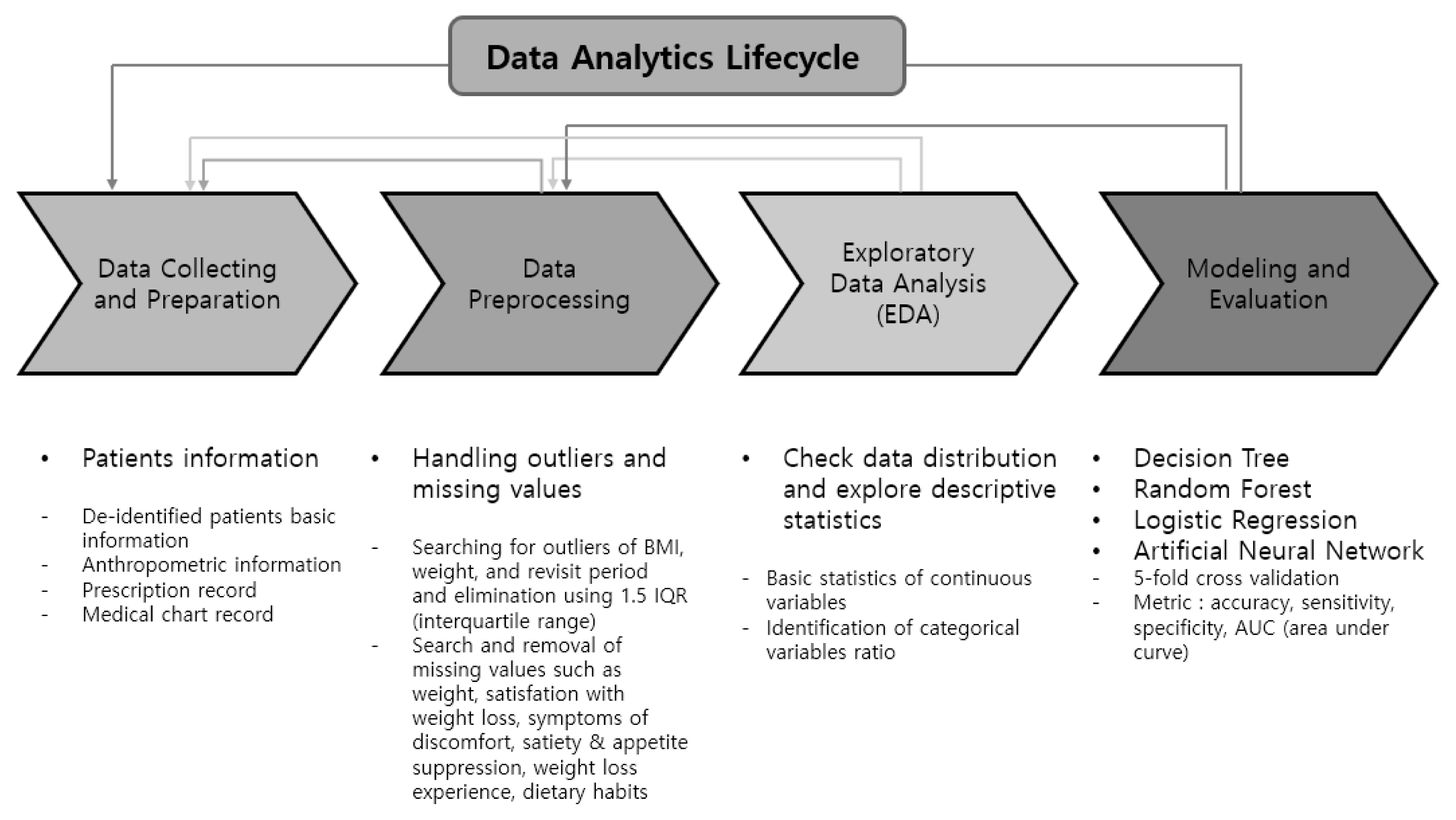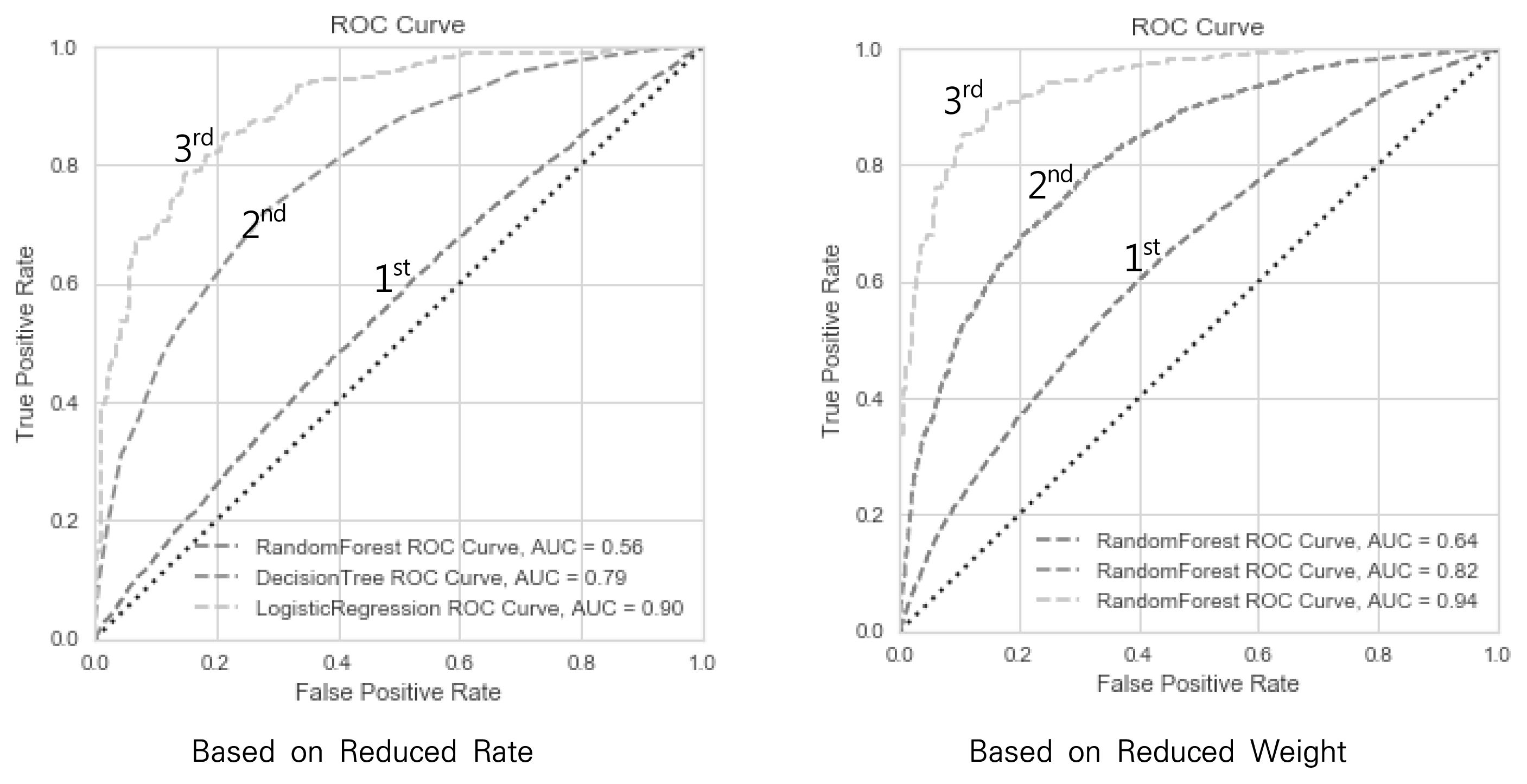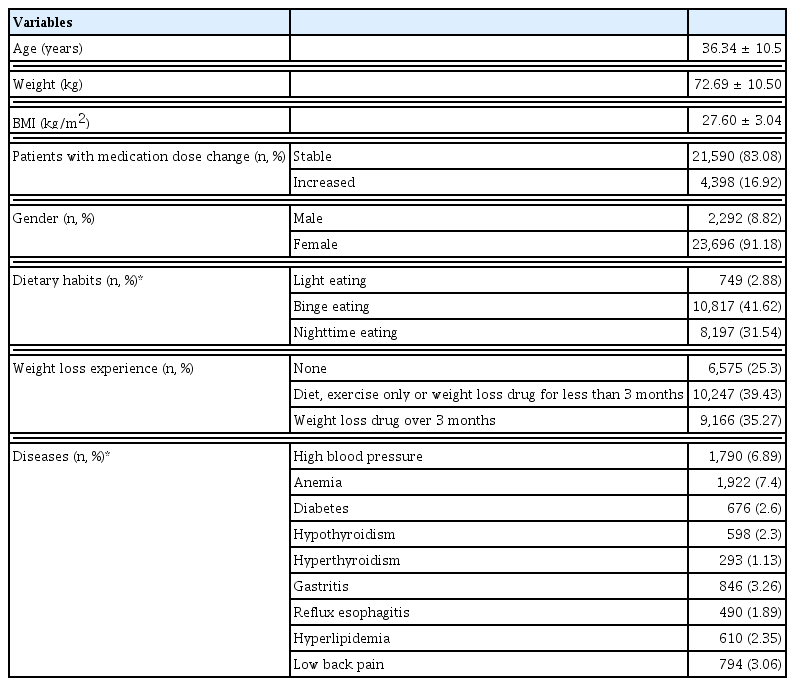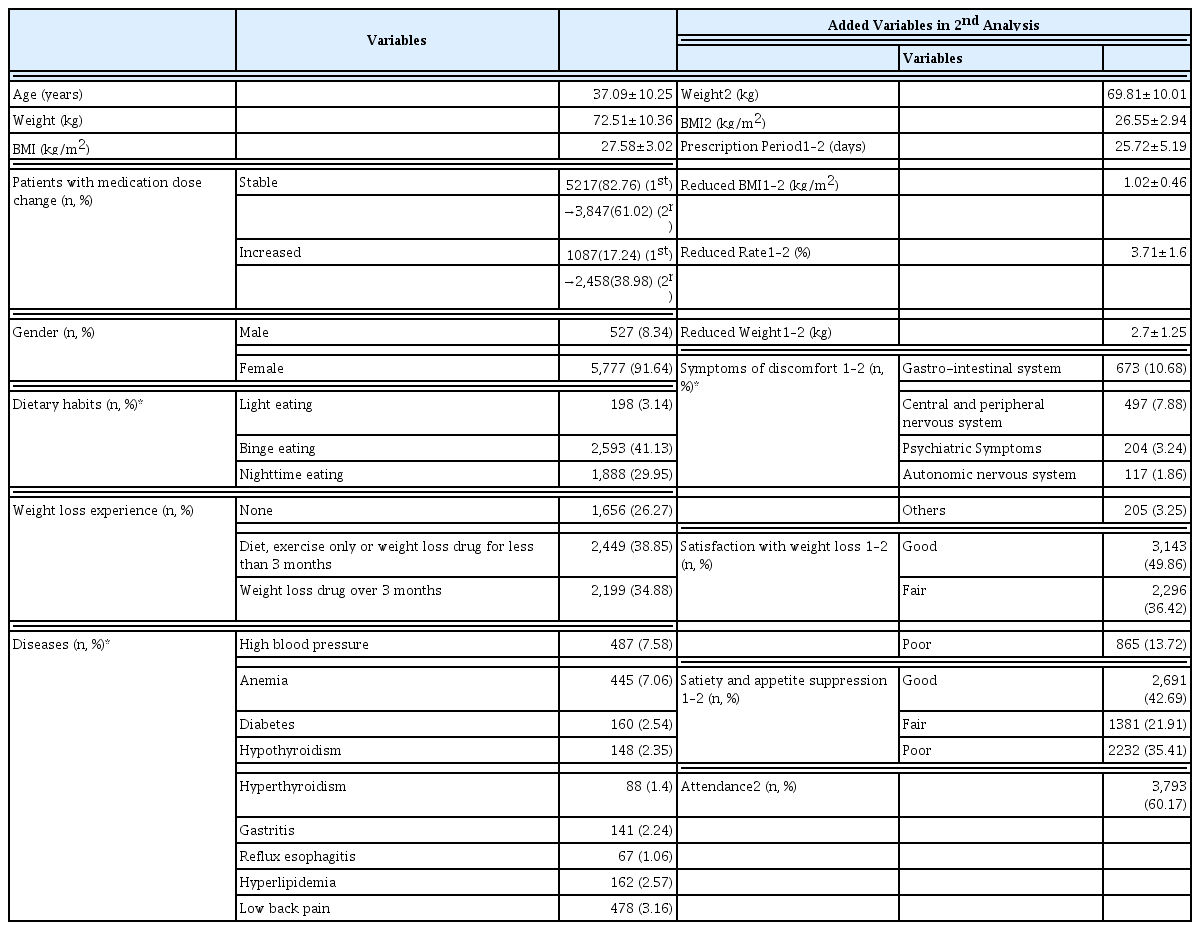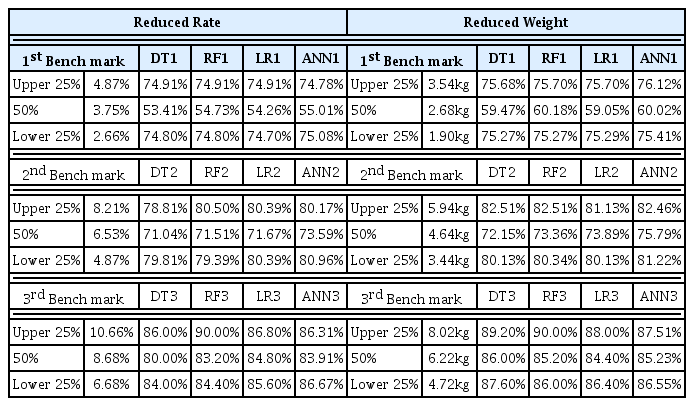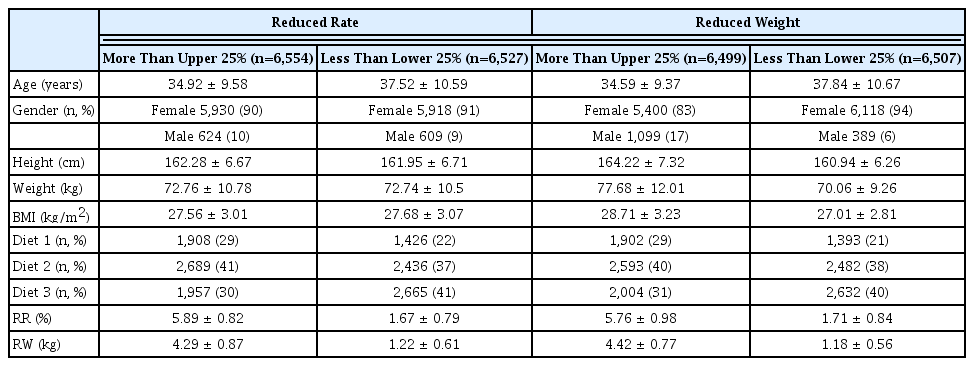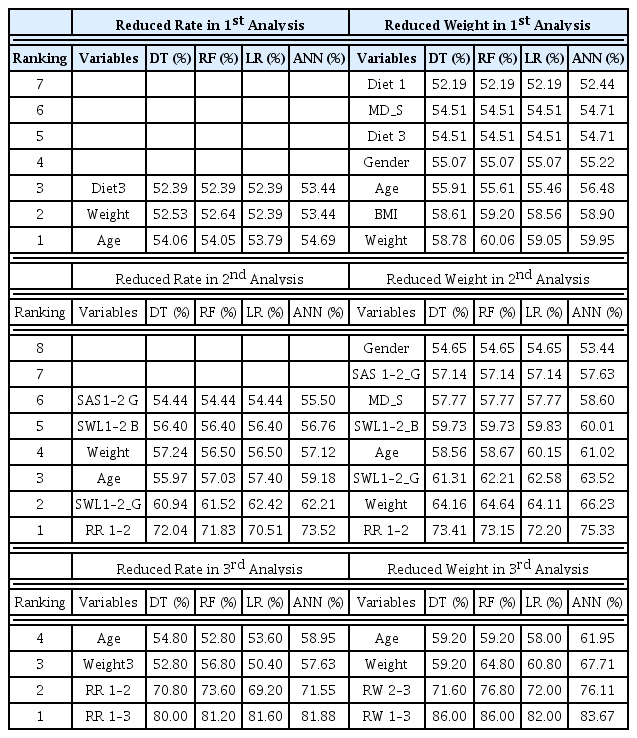References
1. Hill JO, Wyatt HR, Peters JC. Energy balance and obesity. Circulation 2012;126(1):126–32.
2. Haidar YM, Cosman BC. Obesity epidemiology. Clin Colon Rectal Surg 2011;24(4):205–10.
3. Wall KC, Politzer CS, Chahla J, Garrigues GE. Obesity is associated with an increased prevalence of glenohumeral osteoarthritis and arthroplasty: A cohort study. Orthop Clin N Am 2020;51(2):259–264.
4. Kolb R, Sutterwala FS, Zhang W. Obesity and cancer: inflammation bridges the two. Curr Opin Pharmacol 2016;29:77–89.
5. Handjieva-Darlenska T, Handjiev S, Larsen TM, Baak MA, Jebb S, Papadaki A, et al. Initial weight loss on an 800-kcal diet as a predictor of weight loss success after 8 weeks: the Diogenes study. Eur J Clin Nutr 2010;64(9):994–9.
6. Hollis JF, Gullion CM, Stevens VJ, Brantley PJ, Appel LJ, Ard JD, et al. Weight loss during the intensive intervention phase of the weight-loss maintenance trial. Am J Prev Med 2008;35(2):118–26.
7. Reed JR, Yates BC, Houfek J, Briner W, Schmid KK, Pullen CH. Motivational Factors Predict Weight Loss in Rural Adults. Public Health Nurs 2016;33(3):232–241.
8. Annesi JJ, Whitaker AC. Psychological factors discriminating between successful and unsuccessful weight loss in a behavioral exercise and nutrition education treatment. Int J Behav Med 2010;17(3):168–75.
9. Fabricatore AN, Wadden TA, Moore RH, Butryn ML, Heymsfield SB, Nguyen AM. Predictors of attrition and weight loss success: Results from a randomized controlled trial. Behav Res Ther 2009;47(8):685–91.
10. Hadziabdic MO, Mucalo I, Hrabac P, Matic T, Rahelic D, Bozikov V. Factors predictive of drop-out and weight loss success in weight management of obese patients. J Hum Nutr Diet 2015;28(2):24–32.
11. Batterham M, Tapsell LC, Charlton KE. Predicting dropout in dietary weight loss trials using demographic and early weight change characteristics: Implications for trial design. Obes Res Clin Pract 2016;10(2):189–96.
12. Kang EY, Park YB, Kim MY, Park YJ. A Study on Factors Associated with Weight Loss by ‘Gamitaeeumjowee-Tang’
. J Korean Med Obes Res 2017;17(2):68–72.
13. Batterham M, Tapsell L, Charlton K, O’Shea J, Thorne R. Using data mining to predict success in a weight loss trial. J Hum Nutr Diet 2017;30(4):471–478.
14. Rajkomar A, Dean J, Kohane I. Machine Learning in Medicine. N Engl J Med 2019;380:1347–1358.
15. Kim H, Yang SB, Kang Y, Park YB, Kim JH. Machine learning approach to blood stasis pattern identification based on self-reported symptoms. Korean J Acupunct 2016;33(3):102–113.
16. Sharma K, Kaur A, Gujral S. Brain tumor detection based on machine learning algorithms. Int J Comput Appl 2014;103(1):7–11.
17. Kourou K, Exarchos TP, Exarchos KP, Karamouzis MV, Fotiadis DI. Machine learning applications in cancer prognosis and prediction. Comput Struct Biotechnol J 2015;13:8–17.
18. Wu CC, Hsu WD, Islam MM, Poly TN, Yang HC, Nguyen PA, et al. An artificial intelligence approach to early predict non-ST-elevation myocardial infarction patients with chest pain. Comput Methods Programs Biomed 2019;173:109–117.
19. Wang S, Summers RM. Machine learning and radiology. Med Image Anal 2012;16(5):933–51.
20. Dugan TM, Mukhopadhyay S, Carroll A, Downs S. Machine Learning Techniques for Prediction of Early Childhood Obesity. Appl Clin Inform 2015;6(3):506–520.
21. Hammond R, Athanasiadou R, Curado S, Aphinyanaphongs Y, Abrams C, Messito MJ, et al. Predicting childhood obesity using electronic health records and publicly available data. PLoS ONE 14(4)e0215571.
https://doi.org/10.1371/journal.pone.0215571
.
22. Aswani A, Kaminsky P, Mintz Y, Flowers E, Fukuoka Y. Behavioral Modeling in Weight Loss Interventions. Eur J Oper Res 2019;272(3):1058–1072.
23. Kim YM, Cho DG, Kang SH. Analysis of Factors associated with Geographic Variations in the Prevalence of Adult Obesity using Decision Tree. Health Soc Sci 2014;36(1):157–181.
24. Nam SH, Kim SY, Lim YW, Park YB. Review on predictors of weight loss in obesity treatment. J Korean Med Obes Res 2018;18(2):115–127.
25. Yoon NR, Yoo YJ, Kim MJ, Kim SY, Lim YW, Lim HH, et al. Analysis of adverse events in weight loss program in combination with ‘Gamitaeeumjowee-Tang’ and low-calorie diet. J Korean Med Obes Res 2018;18(1):1–9.
26. Kurs MB, Rudnicki WR. Feature Selection with the Boruta Package. J Stat Softw 2010;36(11):1–13.
27. Jung D, Kim G, Park J, Lee H, Kim H, Choi H, et al. Prediction of rehospitalization of patients and finding causes of it with data mashup and bigdata analysis. Entrue J Inf Technol 2015;14(3):133–149.
29. Ortega Hinojosa AM, MacLeod KE, Balmes J, Jerrett M. Influence of school environments on childhood obesity in California. Environ Res 2018;166:100–107.
30. Munger E, Choi H, Dey AK, Elnabawi YA, Groenendyk JW, Rodante J, et al. Application of machine learning to determine top predictors of noncalcified coronary burden in psoriasis: An observational cohort study”. J Am Acad Dermatol 2019;Article in press
https://doi.org/10.1016/j.jaad.2019.10.060
.
31. Scheinker D, Valencia A, Rodriguez F. Identification of factors associated with variation in US county-level obesity prevalence rates using epidemiologic vs machine learning models. JAMA Netw Open 2019;2(4):e192884.
32. Forman EM, Kerrigan SG, Butryn ML, Juarascio AS, Manasse SM, Ontañón S, et al. Can the artificial intelligence technique of reinforcement learning use continuously-monitored digital data to optimize treatment for weight loss? J Behav Med 2019;42(2):276–290.
33. Hong N, Wen A, Stone DJ, Tsuji S, Kingsbury PR, Rasmussen LV, et al. Developing a FHIR-based EHR phenotyping framework: A case study for identification of patients with obesity and multiple comorbidities from discharge summaries. J Biomed Inform 2019;99103310
https://doi.org/10.1016/j.jbi.2019.103310
.
34. Han JY, Park YJ. Analysis of factors influencing obesity treatment according to initial condition and compliance with medication. J Korean Med Obes Res 2019;19(1):31–41.
35. Magkos F, Fraterrigo G, Yoshino J, Luecking C, Kirbach K, Kelly SC. Effects of Moderate and Subsequent Progressive Weight Loss on Metabolic Function and Adipose Tissue Biology in Humans with Obesity. Cell Metab 2016;23(4):591–601.
36. Jo GW, Ok JM, Kim SY, Lim YW. Review on the Efficacy and Safety of Mahuang and Ephedrine in the Treatment of Obesity -Focused on RCT-. J Korean Med 2017;38(3):170–184.
37. Disse E, Ledoux S, Bétry C, Caussy C, Maitrepierre C, Coupaye M, et al. An artificial neural network to predict resting energy expenditure in obesity. Clin Nutr 2018;37(5):1661–1669.
